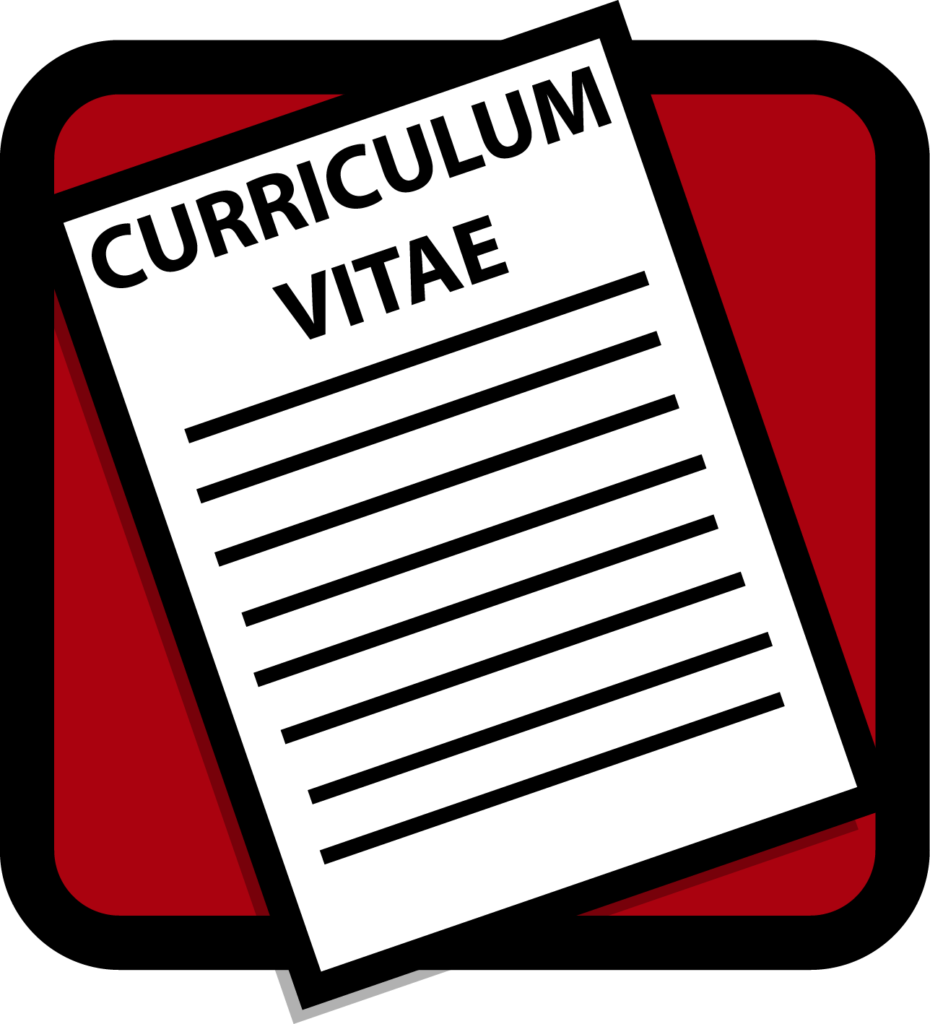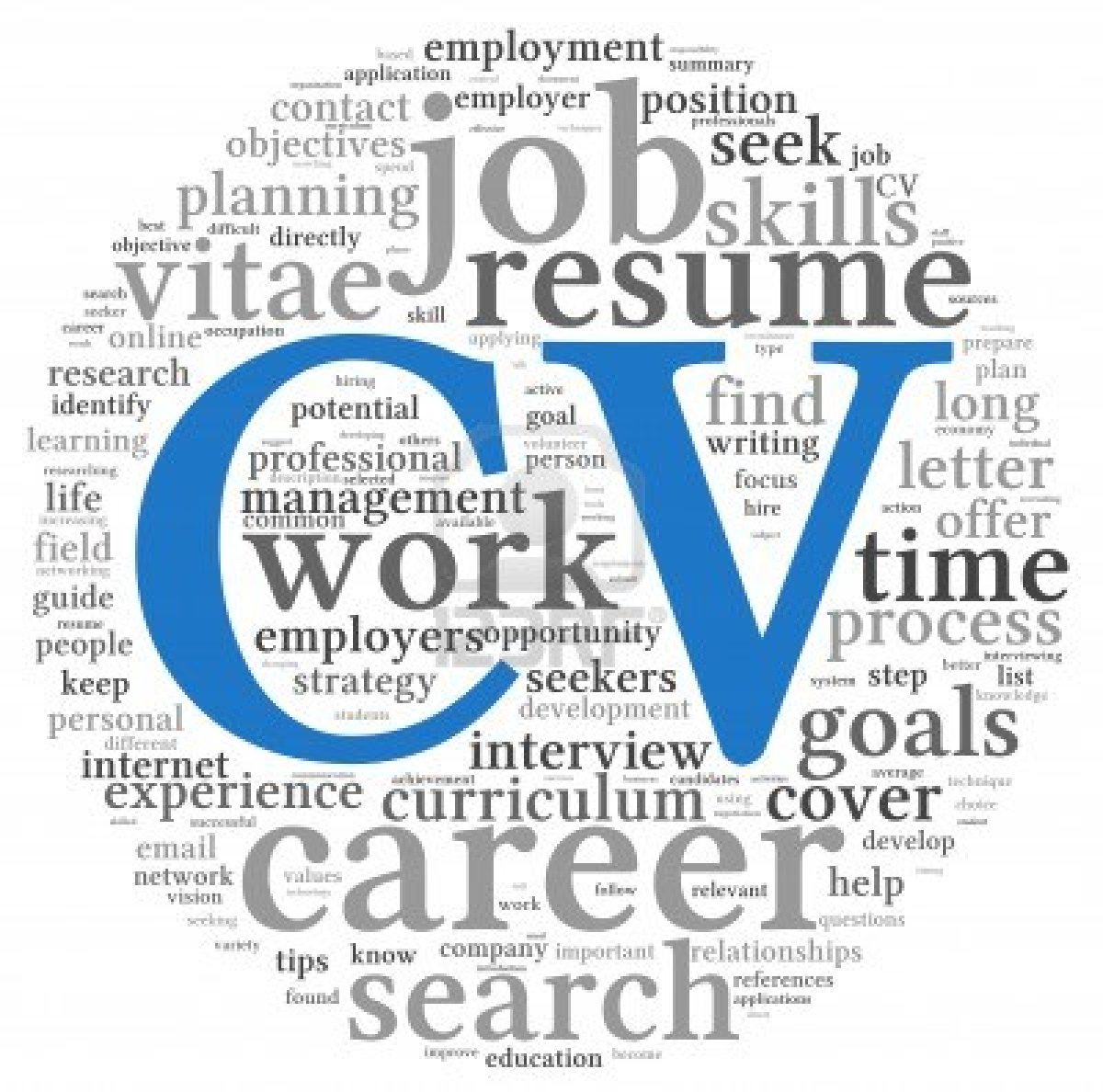Essential Tips to Create an Impressive Curriculum Vitae
Essential Tips to Create an Impressive Curriculum Vitae. A well-crafted Curriculum Vitae (CV) is more than just a document—it is your personal marketing tool that showcases your qualifications, experience, and potential to prospective employers. In today’s highly competitive job market, where recruiters often receive hundreds of applications for a single position, having an impressive CV can significantly increase your chances of standing out and securing an interview.
The Best Steps To Passing Your Job Interview
Your CV serves as your first impression, often determining whether you move forward in the hiring process or get overlooked. It should effectively communicate your skills, accomplishments, and career progression in a clear, concise, and engaging manner. However, many job seekers struggle with common CV-writing mistakes, such as poor formatting, vague descriptions, irrelevant details, and lack of keyword optimization. These errors can make an otherwise qualified candidate appear unremarkable or even unqualified.
Find the Latest Job Vacancies Near You in Australia
Crafting an outstanding CV requires careful attention to structure, content, and presentation. The way you highlight your strengths, tailor your CV to specific job roles, and use powerful language can make a substantial difference. Whether you are a fresh graduate looking for your first job, a professional seeking career advancement, or someone transitioning into a new industry, following the right CV-writing strategies will help you leave a lasting impression.
This guide provides essential tips on creating a compelling CV that aligns with industry expectations and employer preferences. From formatting and structuring to optimizing for Applicant Tracking Systems (ATS), you’ll learn how to make your CV not only visually appealing but also effective in communicating your professional value. By following these best practices, you can enhance your chances of landing your desired job and advancing in your career.
Understanding the Purpose of a CV
A Curriculum Vitae (CV) is a fundamental tool in job applications, serving as a comprehensive summary of your professional journey. It provides potential employers with key insights into your qualifications, skills, and career achievements, helping them assess your suitability for a specific role. A well-structured CV can make a strong first impression, increasing your chances of securing an interview and, ultimately, landing the job.
Given that recruiters often receive a high volume of applications, your CV should effectively highlight your strengths while remaining clear, organized, and easy to read. It should tell your professional story in a compelling way that distinguishes you from other candidates.
The Role of a CV
A CV is much more than just a list of qualifications and work experiences—it serves as a marketing tool that presents you in the best possible light to employers. It provides a structured overview of your:
- Educational Background – Degrees, certifications, and relevant training.
- Work Experience – Past and present roles, responsibilities, and accomplishments.
- Skills – Technical, interpersonal, and transferable skills relevant to the job.
- Achievements – Notable contributions in previous roles, such as awards or projects.
Recruiters and hiring managers rely on CVs to determine whether a candidate meets the requirements of a job. A strong CV should not only list information but also demonstrate how your experiences and skills make you the ideal candidate for the position.
For a deeper understanding of CV writing and its impact on job applications, you can explore resources such as Indeed’s CV Guide and LinkedIn’s Resume and CV Tips.
CV vs. Resume: What’s the Difference?
While the terms CV and resume are often used interchangeably, they have distinct differences in length, content, and purpose.
1. Curriculum Vitae (CV)
A CV is a detailed and comprehensive document that provides a full history of your academic and professional background. It typically includes:
- Personal details (name, contact information, professional summary)
- Full educational history (degrees, certifications, research work)
- Detailed work experience, including responsibilities and accomplishments
- Skills and competencies
- Publications, conferences, and awards (for academic or research-based CVs)
CVs are commonly used in academia, research, and international job applications, especially in regions like Europe, Africa, and Asia. They can range from two to several pages, depending on experience and industry requirements.
2. Resume
A resume, on the other hand, is a concise, one-to-two-page document that provides a summary of your skills, work experience, and achievements relevant to a specific job. Unlike a CV, a resume is tailored to each job application, focusing only on the most pertinent details.
Resumes are widely used in countries like the United States and Canada, where brevity and impact are valued over exhaustive detail. While CVs can include extensive information, resumes should be brief, tailored, and achievement-oriented.
For a more detailed comparison, visit Zety’s guide on CV vs. Resume.
The Importance of Tailoring Your CV
One of the most critical mistakes job seekers make is sending the same CV to every employer. Instead, each job application should have a customized CV that aligns with the specific job description.
Why Customization Matters
- Increases ATS Compatibility – Many companies use Applicant Tracking Systems (ATS) to filter CVs before they reach recruiters. Using keywords from the job description improves your chances of passing through these automated filters.
- Highlights Relevant Experience – Tailoring your CV ensures that the most relevant skills and accomplishments are prominently displayed, making it easier for recruiters to see why you’re the best fit.
- Demonstrates Genuine Interest – A CV that directly addresses a company’s requirements shows that you’ve taken the time to understand the role, increasing your chances of making a positive impression.
How to Tailor Your CV Effectively
- Analyze the Job Description – Identify keywords and required skills, and incorporate them naturally into your CV.
- Prioritize Relevant Experience – Focus on work history and achievements that align with the job role.
- Adjust Your Summary/Objective Statement – Rewrite your personal statement to match the specific qualifications and expectations of the employer.
- Modify Skills & Competencies Section – Highlight skills that are explicitly mentioned in the job posting.
- Format for Easy Readability – Use clear headings, bullet points, and an organized layout to ensure that your CV is easy to scan.
For a step-by-step guide on tailoring your CV, check out The Balance Careers’ CV Writing Tips. By following these best practices, you can create a powerful, well-structured CV that improves your chances of securing interviews and landing your dream job.
Structure and Format
A well-structured and professionally formatted Curriculum Vitae (CV) is essential in making a strong first impression on potential employers. Recruiters and hiring managers often spend just a few seconds scanning a CV, so it must be clear, concise, and easy to navigate. Ensuring that your CV follows a logical structure will improve readability and increase your chances of standing out in a competitive job market.
Key Sections to Include
Each CV should contain fundamental sections that provide a comprehensive yet concise overview of your qualifications, skills, and experiences. Below are the key sections that every CV should include:
1. Contact Information
Your contact details should be placed at the top of your CV, making it easy for employers to reach you. Ensure you include:
Full Name – Use your professional name as it appears on official documents.
Phone Number – Provide a reliable number where recruiters can contact you.
Email Address – Use a professional email address (avoid casual emails like coolguy123@email.com).
LinkedIn Profile – If you have a LinkedIn account, include a link to showcase your professional network and endorsements.
Professional Website/Portfolio (if applicable) – Particularly useful for creatives, writers, or professionals with an online portfolio.
💡 Example:
John Doe
📞 +234 801 234 5678 | ✉ johndoe@email.com
🔗 linkedin.com/in/johndoe | 🌍 johndoeportfolio.com
2. Professional Summary
A Professional Summary (also called a Career Summary or Personal Statement) is a short, impactful introduction that highlights your key skills, experience, and career objectives. This section should be tailored to the job you are applying for.
🔹 Tip: Keep it between 3-5 sentences and focus on what makes you a strong candidate.
💡 Example:
“Results-driven marketing professional with over 5 years of experience in digital strategy, brand management, and social media marketing. Adept at developing high-impact campaigns that increase brand awareness and customer engagement. Passionate about data-driven decision-making and committed to delivering measurable business growth.”
For more inspiration, check out Indeed’s guide on writing a professional summary.
3. Work Experience
This is one of the most critical sections of your CV, as it demonstrates your career progression, expertise, and accomplishments. List your work experience in reverse chronological order, starting with your most recent job.
🔹 Key details to include:
Job Title – Clearly state your position.
Company Name & Location – Indicate where you worked.
Employment Dates – Use the Month/Year format (e.g., Jan 2020 – Present).
Key Responsibilities & Achievements – Use bullet points to highlight your impact rather than just listing duties. Focus on quantifiable achievements (e.g., “Increased sales by 30% within six months”).
💡 Example:
Marketing Manager
ABC Digital Agency, Lagos | Jan 2020 – Present
- Developed and executed digital marketing strategies, increasing social media engagement by 50%.
- Led a team of five marketing specialists, achieving a 20% revenue increase within one year.
- Spearheaded a Google Ads campaign that resulted in a 30% increase in website traffic.
For more details, check out The Balance Careers’ guide on listing work experience.
4. Education
Your education section should provide details about your academic qualifications, including degrees, certifications, and relevant coursework. If you are a recent graduate, you may include notable achievements such as honors, research projects, or leadership roles.
🔹 Key details to include:
Degree and Field of Study
Institution Name
Year of Graduation
Honors or Awards (if applicable)
💡 Example:
Bachelor of Science in Computer Science
University of Lagos, Nigeria | Graduated: 2019
- Graduated with First-Class Honors
- Completed a final-year project on AI-powered cybersecurity solutions
5. Skills
The Skills Section is an opportunity to showcase both hard skills (technical abilities) and soft skills (interpersonal and communication skills) relevant to the job.
🔹 Examples of Hard Skills:
Programming Languages (Python, Java, SQL)
Graphic Design (Adobe Photoshop, Illustrator)
Data Analysis (Excel, Power BI, Tableau)
🔹 Examples of Soft Skills:
Leadership and Team Management
Problem-Solving
Strong Communication
💡 Tip: Many recruiters use Applicant Tracking Systems (ATS), so include keywords from the job description to increase your chances of passing ATS filters.
6. Additional Sections (Optional)
To further enhance your CV, consider adding sections that showcase your personality, accomplishments, and interests:
Volunteer Work – Demonstrates social responsibility and leadership.
Awards & Certifications – Highlights achievements that make you stand out.
Publications & Research – Useful for academic and research-based roles.
Languages Spoken – Especially valuable for international job applications.
Best Practices for Formatting
Your CV’s format plays a crucial role in readability and professionalism. Follow these formatting tips to create a visually appealing and easy-to-scan document:
Use a Clean, Professional Font – Stick to readable fonts like Arial, Calibri, or Times New Roman (size 10-12pt).
Maintain Proper Spacing & Margins – Use 1-inch margins and adequate line spacing to avoid clutter.
Utilize Bullet Points – Instead of long paragraphs, use bullet points to highlight key details.
Stick to a Consistent Structure – Use clear headings, bold titles, and uniform alignment for a polished look.
Save as PDF – Unless otherwise specified, save your CV as a PDF to maintain formatting across different devices.
💡 For inspiration, check out professional CV templates on Canva or Zety.
Final Thoughts
A well-structured CV is a powerful tool in landing job interviews. By following these formatting guidelines and ensuring all key sections are included, you increase your chances of grabbing recruiters’ attention and standing out from other applicants.
Need further help? Check out LinkedIn Learning or Coursera’s Resume and CV Writing Courses for professional guidance on improving your CV.
Writing a Compelling Personal Statement
Highlighting Work Experience
Effective Ways to Present Work Experience
- Use Reverse Chronological Order: List your most recent job first.
- Incorporate Action Verbs: Start bullet points with powerful verbs like “Managed,” “Developed,” “Implemented,” and “Optimized.”
- Quantify Your Achievements: Use numbers to showcase results, e.g., “Increased sales by 30% in six months.”
Showcasing Education and Qualifications
- List your degrees, certifications, and training programs.
- Highlight honors, distinctions, and relevant coursework.
- Recent graduates should focus on educational achievements if they lack work experience.
Skills Section: What to Include
Hard vs. Soft Skills
- Hard Skills: Technical abilities like programming, data analysis, and graphic design.
- Soft Skills: Interpersonal abilities such as communication, teamwork, and problem-solving.
Examples of In-Demand Skills
- Data Analytics
- Project Management
- SEO & Digital Marketing
- Cloud Computing
- Cybersecurity
Additional Sections to Consider
Volunteer Work and Internships
Demonstrates commitment, skills, and leadership qualities.
Professional Memberships
Showcases industry involvement and credibility.
Languages and Technical Proficiencies
Adds value in globalized workplaces.
Common Mistakes to Avoid
- Spelling and grammar errors
- Unprofessional email addresses (e.g., cooldude123@gmail.com)
- Excessive length or too much fluff
Tailoring Your CV for Different Industries
- Corporate Jobs: Formal, structured CVs with a focus on achievements.
- Creative Industries: Allow for more design elements and portfolios.
- Tech Sector: Highlight technical proficiencies and certifications.

The Role of Keywords in CV Writing
Keywords play a crucial role in CV optimization, especially in today’s job market where many companies rely on Applicant Tracking Systems (ATS) to filter and rank applications. Understanding how ATS works and strategically incorporating the right keywords can significantly improve your chances of getting noticed by recruiters.
Understanding ATS and Keywords
An Applicant Tracking System (ATS) is a software tool that helps employers manage large volumes of job applications by scanning CVs for specific keywords related to the job description. If your CV lacks these relevant keywords, it might be automatically rejected before a human recruiter even sees it.
To increase your chances of passing this automated screening, you need to:
Identify Relevant Keywords – Carefully review the job description and highlight key skills, qualifications, and industry-specific terms.
Use Keywords Naturally – Integrate these terms organically throughout your CV, especially in the skills, work experience, and professional summary sections.
Avoid Keyword Stuffing – Overloading your CV with keywords in an unnatural way can make it difficult to read and may be flagged by ATS.
Example: Job Description vs. Optimized CV
Job Description Excerpt:
“Seeking a digital marketing specialist with expertise in SEO, Google Ads, content creation, and data analysis. The ideal candidate should have experience in social media marketing, PPC campaigns, and Google Analytics.”
Optimized CV Excerpt:
“Experienced digital marketing specialist skilled in SEO, Google Ads, and content creation. Proven track record in PPC campaigns, social media marketing, and data analysis, utilizing Google Analytics to optimize campaign performance.”
By mirroring the exact phrasing from the job description, your CV is more likely to be ranked higher by ATS, increasing your chances of moving forward in the hiring process.
For more guidance, check out Jobscan’s ATS optimization tool to analyze your CV’s keyword relevance.
How to Incorporate Keywords Naturally
Using keywords effectively in your CV is not just about adding industry-specific terms—it’s about ensuring they blend seamlessly into your content while accurately reflecting your skills and experience. Simply listing keywords without context can make your CV appear unnatural and may reduce its readability.
Steps to Incorporate Keywords Naturally
1. Extract Keywords from the Job Description
Carefully analyze the job posting and highlight important terms related to:
Skills – (e.g., “SEO optimization,” “data analysis,” “Python programming”)
Experience Requirements – (e.g., “project management,” “customer service,” “team leadership”)
Certifications/Qualifications – (e.g., “CPA certification,” “Google Analytics certified”)
💡 Tip: Look for repeated terms in different job listings for the same role—these are highly relevant industry keywords.
2. Integrate Keywords into Key CV Sections
Once you have identified the right keywords, strategically weave them into different sections of your CV:
Professional Summary
Instead of:
“Experienced in marketing and analytics.”
Write:
“Marketing specialist with expertise in SEO optimization, Google Analytics, and PPC campaign management to drive data-informed marketing strategies.”
Work Experience
Instead of:
“Managed social media accounts.”
Write:
“Developed and executed a social media marketing strategy that increased engagement by 40%, utilizing content creation, audience analysis, and paid social campaigns.”
Skills Section
Instead of:
“Good at data analysis and project management.”
Write:
“Proficient in data analysis, project management, SQL, and Tableau for business intelligence reporting.”
3. Avoid Keyword Stuffing
Do not randomly insert keywords without context. Instead of writing:
“SEO, content marketing, PPC, email campaigns, social media marketing, data analysis, Google Analytics, lead generation.”
Rephrase it naturally:
“Executed SEO-driven content marketing strategies, managing PPC campaigns and email marketing initiatives to improve lead generation and user engagement. Leveraged Google Analytics and data analysis to optimize digital campaigns.”
💡 Pro Tip: Use synonyms and variations of keywords where applicable (e.g., “project management” can also be “managing projects” or “leading initiatives”) to increase ATS compatibility.
For more keyword optimization insights, check out Jobscan or Zety’s CV keyword guide.
The Final Review Process
- Proofread multiple times.
- Seek feedback from mentors or professionals.
- Ensure formatting consistency.
Frequently Asked Questions
How long should my CV be?
Ideally, 1-2 pages for most professionals; academic CVs can be longer.
Should I include a photo?
Only if it is industry-appropriate (e.g., acting, modeling jobs).
What if I have employment gaps?
Be honest and highlight productive activities like volunteering, freelancing, or further studies.
How often should I update my CV?
Regularly update your CV whenever you gain new skills, achievements, or job roles.
Conclusion
A well-crafted CV is your gateway to career success. By following these tips, you can create a compelling document that stands out to recruiters and hiring managers. Remember to tailor your CV for each application, use keywords effectively, and proofread thoroughly. Start refining your CV today and increase your chances of landing your dream job!
Call-to-Action
Want more career tips? Subscribe to our newsletter and share your CV writing experiences in the comments below!
